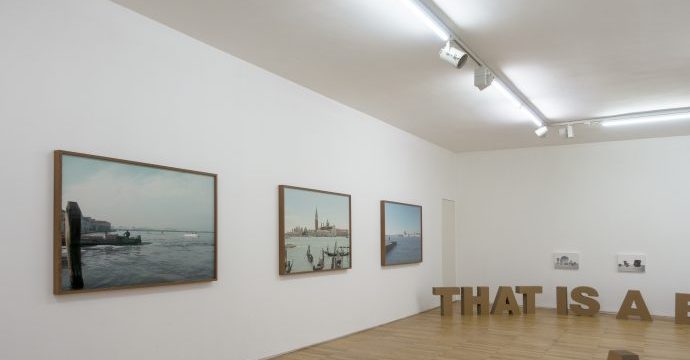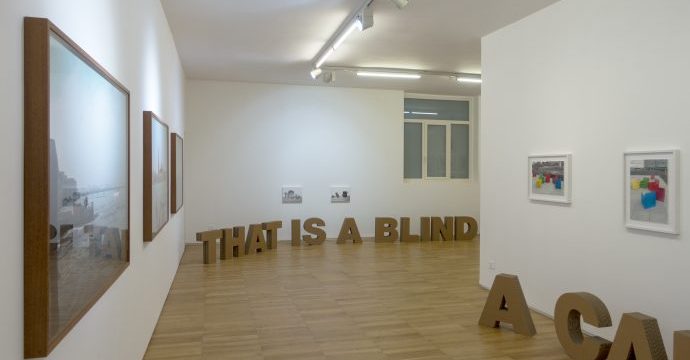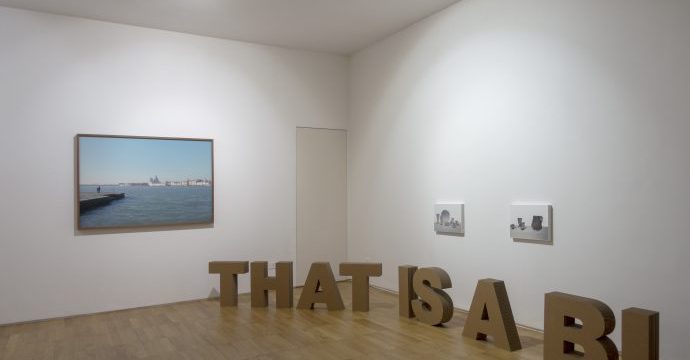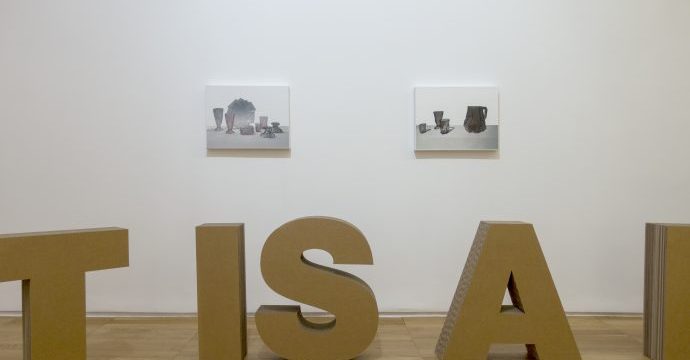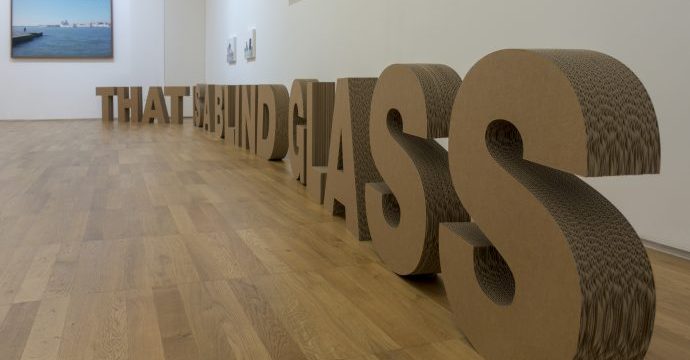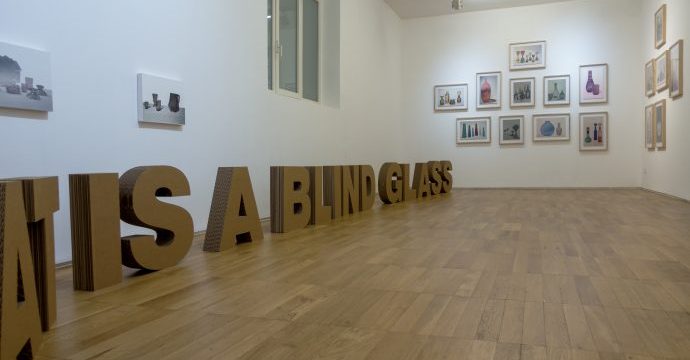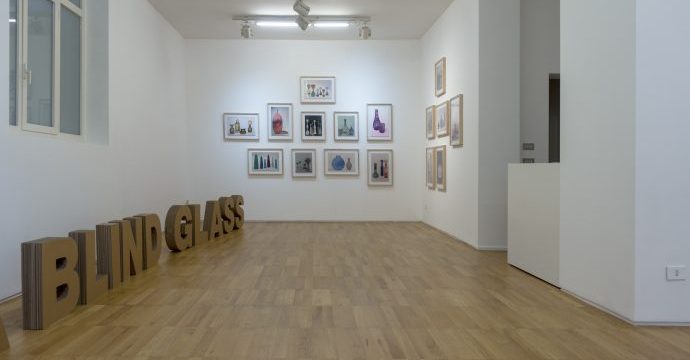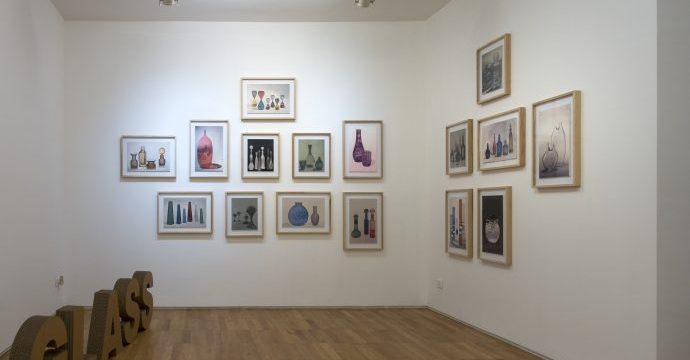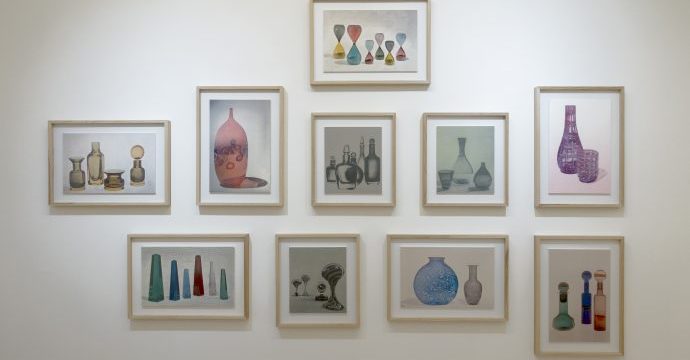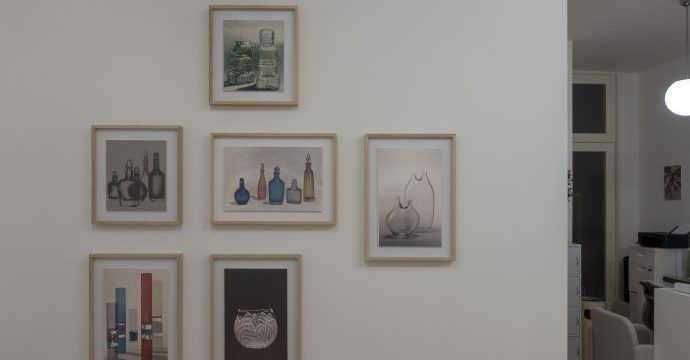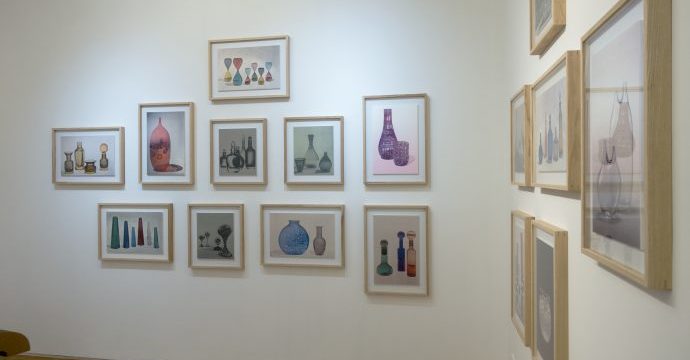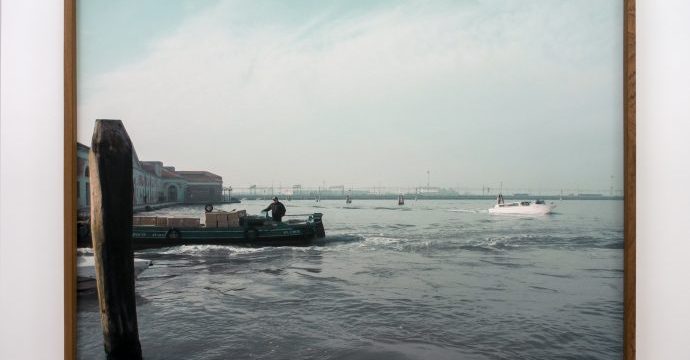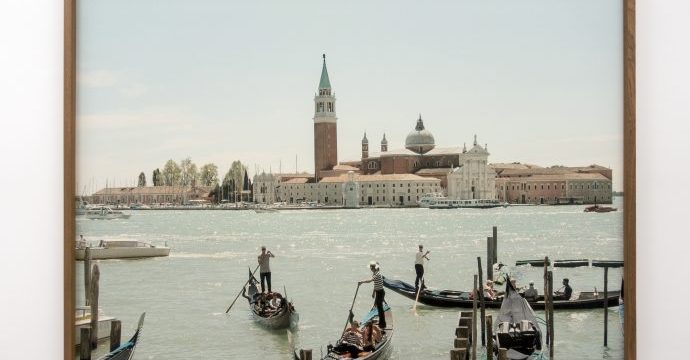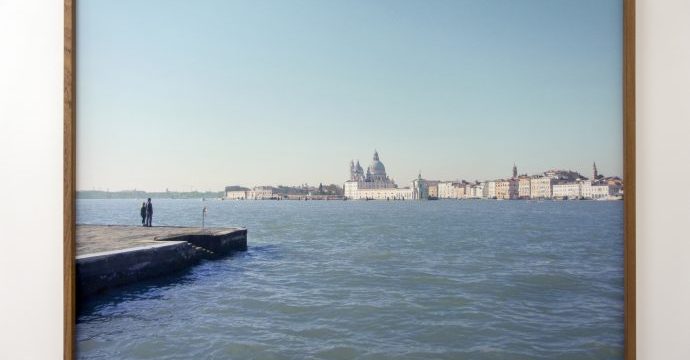Through a Venetian Blind Glass
- Pier Giorgio De Pinto
- Through a Venetian Blind Glass
Through a Venetian Blind Glass (2023)
Installation:
- 25 paintings, variable dimensions. Mixed media (Watercolor, Gouache, permanent pencil, pastel mounted on canvas frame).
- ‘A Blind Glass that is a Carafe that is a Blind Glass (Homage to Gertrude Stein)’, 2022. Laser cut corrugated cardboard Sculpture. Each Letter 50 (h.) x 12 (depth). Total length 12 linear metres. Variable dimensions.
You can download or navigate the catalogue here
The word is a complex of phonemes, i.e. of articulated sounds, or even a single phoneme (and the relative transcription in graphic signs), through which humans expresses a generic notion, which is specified and determined in the context of a sentence. The word, a set of letters, defines the object and materializes in visible pictorial and sculptural form in the artist’s installation.
“A carafe that is a blind glass”, a phrase by Gertrude Stein (1874-1946), the beginning of the poem “Tender Buttons”, shows us the future path in De Pinto’s latest solo exhibition who crystallizes the words of the experimental American writer in sculpture. But words, founding elements of language, can take on different and arcane meanings in an attempt to redefine the reality that surrounds us, especially if declined to poetic intentions that take on new descriptive capabilities.
In the intention of the artist, who has always been interested in defining what can be derived from the landscape and its implicit connotations, Stein’s sentence serves as a trailblazer for the works exhibited and for the objects that the artist considers in his works.
Each place has its precise connotations and Venice and its lagoon are historically inextricably linked to what the transparency of glass can give us back as a real liquid element that surrounds it and is peculiar to its imagination. On display, the artist presents a series of landscapes taken from photos he took at the Whitney Museum in New York, three large maps of Venetian landscapes and a series of works illustrating significant objects in the history of Murano glass; all made with watercolor. This material, difficult to maneuver, is instead, in the creation of the landscape and the objects in question, harnessed with skill such as to give us an image that we could define as photographic.
Although the artist has long been accustomed to contemporary technologies and technical reproductions, this effort to create the image has a political value in reclaiming the concept of manual skill also in relation to what is described in the glass works. Objects which, in spite of the common functional attribution of container, establish themselves in the aesthetic and technical value in real works of art and obviously such they are in the reproduction by the hand of the artist.
In parallel, it can be said that this also occurs in Mary Heilmann’s colorful seats within the views of the Whitney Museum and the surrounding urban landscape. The object described in this case merges with the primitive characteristics derived from the landscape from which they come and belong and which they could never betray. As never before in this exhibition the word takes shape in its intentional oblique capacity. On the one hand it redefines the contours of objects derived from the poetics of written language and on the other that of artistic research and its origins in visual form.
Umberto Raucci, director of Raucci/Santamaria Studio Project Milano on the occasion of the Solo Exhibition ‘Through a Venetian Blind Glass’, March 2023

